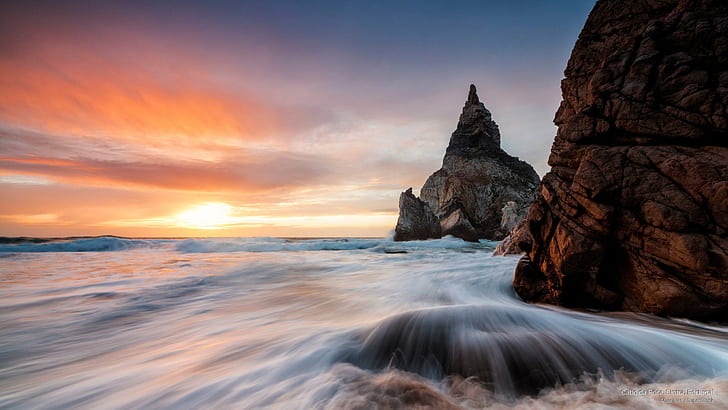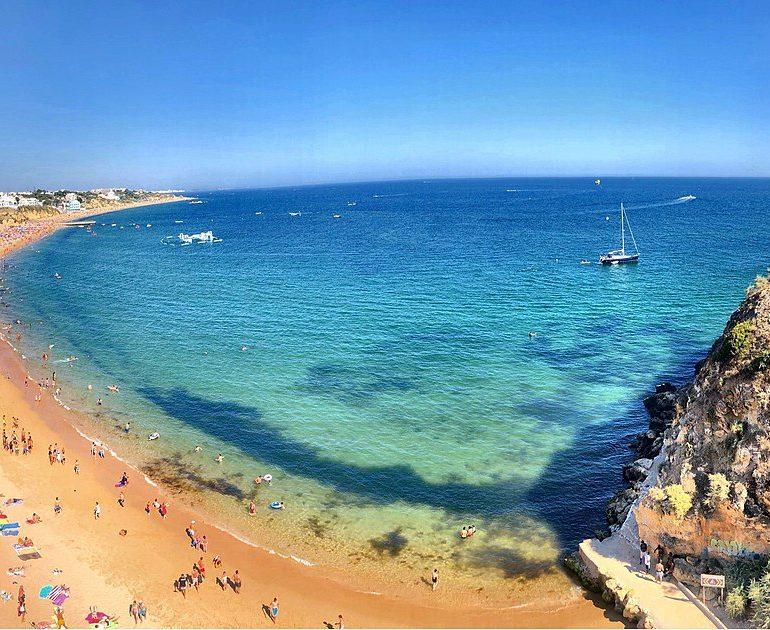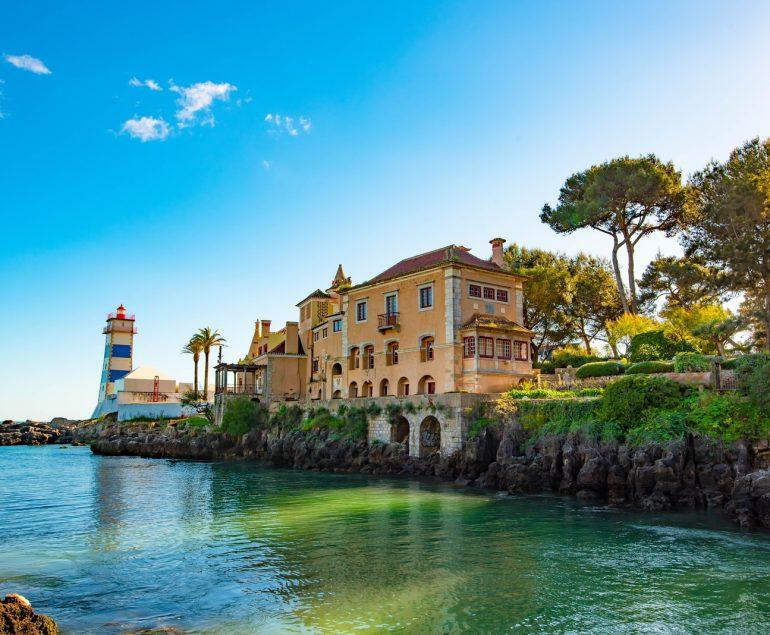Colares is known for its picturesque landscapes and natural beauty. The village is situated at the foot of the Sintra mountains and is surrounded by lush vegetation and rolling hills. The nearby beaches of Praia das Maças, Praia Grande, and Adraga offer visitors the opportunity to enjoy the sun and sea, while the nearby village of Azenhas do Mar offers a glimpse of traditional Portuguese architecture and culture, with its whitewashed cottages built into the cliff side.
The Colares wine region has a long history of wine production and is known for its unique terroir, which is characterized by sandy soils and a maritime climate. They make the Colares wine from the Ramisco grape variety, which is known for its distinct flavors and aromas. The Adega Regional, located in the town center, is a great place to sample the wine and learn more about the region’s winemaking traditions.
The village is also a great starting point for exploring the wider Sintra region. The nearby Sintra-Cascais Nature Reserve offers a variety of hiking and biking trails, while the town of Sintra, which is only 7 km away, is home to several historic palaces and castles, including the famous Palace of Pena. The tram station connects Sintra to Praia das Maçãs during the summer months.
Overall, Colares is a charming and picturesque village with a rich history, culture, and natural beauty. It is a great destination for those looking for a relaxing holiday, surrounded by stunning landscapes and delicious wine.
The civil parish is located on the western coast of Portugal and is marked by Europe’s extreme western extent: Cabo da Roca. It contains the villages of Almoçageme, Atalaia, Azenhas do Mar, Azóia, Colares, Eugaria, Gigarós, Mucifal, Penedo, Praia das Maçãs and Ulgueira.

The parish of Colares is a large green and wooded region that, despite the lack of notable parks or public gardens, is included in the Sintra-Cascais Natural Park in its entirety.
“The Sintra eruptive mass, the coastal strip between Cascais fortress and Foz do Falco south of Ericeira, and the Plateau of S. João das Lampas are the Sintra-Cascais Natural Park’s fundamental landscape components.”
The Sintra mountain range, which has been praised for its beauty for a long time, stands out as a unifying feature of the ensemble, and its geomorphological interest and floristic richness should be underlined.

Cabo da Roca, Europe’s western bow, dominates the coastal strip, which is a sequence of low cliffs, dunes and buried sands, towering limestone cliffs, cachopos and farilhos. Dry stone walls or cane or reed hedges break up the agricultural region, an area of historic humanization, as a barrier against strong marine winds.
The Natural Park is littered with man’s creations. The Palácio da Pena, the Castelo dos Mouros, and the old town of Sintra are all magnificent and well-known. Others, like the church of São Mamede in Janas or the innumerable instances of popular architecture, are simpler and frequently overlooked.
Places of interest in and around Colares
The Roman ruins of Santo Andre de Almoçageme (Portuguese: Ruinas romanas de Santo Andre de Almoçageme) is a Portuguese archaeological site located in the rural civil parish of Colares, in the municipality of Sintra. It includes a group of structures with typological, stylistic or historic value, whose structural elements are worthy of preservation.
The Archaeological Site of Alto da Vigia (Portuguese: Estação Arqueológica de Alto da Vigia) is an archaeological site associated with Roman interventions in Portugal, situated along the Praia das Maçãs in the civil parish of São João das Lampas e Terrugem, in the municipality of Sintra.
The Cabo da Roca Lighthouse (Portuguese: Farol de Cabo da Roca) is a beacon/lighthouse located 165 metres (541 ft) above the Atlantic Ocean, on Portugal’s (and continental Europe’s) most westerly extent (Cabo da Roca). It is located in the civil parish of Colares, in the municipality of Sintra, situated on a promontory that juts out into the ocean, made up of granite boulders and interspersed limestone. It is a third-order lighthouse, which originally began operating in 1772. It was the first new purpose-built lighthouse to be constructed in the country: the older lighthouses in existence at that time were constructed on existing platforms or from pre-existing beacons.
- Pillory of Colares
- Fountain of Espoujeiro
- Dolmen of Adrenunes




